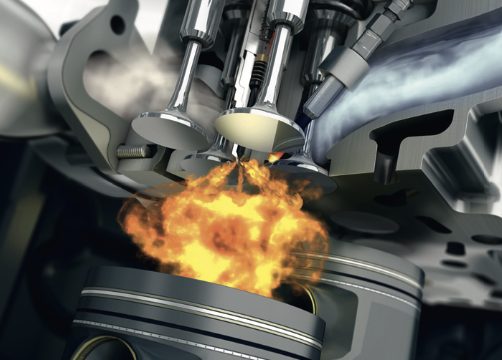Diesel engines have been used in various applications for over a century. The diesel engine’s efficiency and torque make it ideal for heavy-duty applications like trucks, ships, and industrial machinery. However, diesel engines have come under scrutiny in recent years due to their emissions of harmful pollutants, such as nitrogen oxides (NOx) and particulate matter (PM). To address these concerns, new diesel injection systems have been developed that offer better fuel efficiency and reduced emissions.
The new diesel injection systems are designed to deliver fuel in a more controlled and efficient manner. The most common types of diesel injection systems include the common rail, unit injector, and pump nozzle systems. In this blog, we will focus on the common rail system, which is the most widely used diesel injection system today.
The common rail system consists of a high-pressure fuel pump, a common fuel rail, and electronic injectors. The fuel pump pressurizes fuel to a high pressure of up to 2000 bar and delivers it to the common rail. The common rail acts as a high-pressure reservoir that stores fuel and distributes it to each injector as needed. The electronic injectors are controlled by an engine control unit (ECU) that monitors engine conditions and adjusts fuel delivery accordingly.

One of the main benefits of the common rail system is its ability to deliver fuel in a precise and controlled manner. The high-pressure fuel pump ensures that fuel is delivered to the common rail at a consistent pressure, while the electronic injectors can precisely control the amount and timing of fuel injected into the engine cylinders. This allows for more efficient combustion and reduces emissions of harmful pollutants.
Another advantage of the common rail system is its ability to operate at high pressures. The high-pressure fuel injection allows for better atomization of the fuel, which improves combustion efficiency and reduces emissions. Additionally, the high pressure allows for more fuel to be injected per cycle, which can increase engine power and torque.
The common rail system also offers improved reliability and durability compared to older diesel injection systems. The use of electronic injectors and an engine control unit allows for more precise and efficient fuel delivery, reducing wear and tear on engine components. Additionally, the common rail system is less prone to fuel leaks and other issues that can arise with older injection systems.
In conclusion, the new diesel injection systems, particularly the common rail system, offer improved fuel efficiency, reduced emissions, and increased reliability. These benefits make them an attractive option for heavy-duty applications where diesel engines are commonly used. As technology continues to evolve, we can expect to see further advancements in diesel injection systems that offer even greater efficiency and reduced emissions.
Advantages of new diesel injection systems:
- Improved fuel efficiency: New diesel injection systems, such as the common rail system, deliver fuel in a precise and controlled manner, which allows for more efficient combustion and improved fuel economy.
- Reduced emissions: The high-pressure fuel injection and precise fuel delivery of new diesel injection systems result in reduced emissions of harmful pollutants, such as nitrogen oxides (NOx) and particulate matter (PM).
- Increased engine power and torque: The high-pressure fuel injection of new diesel injection systems can increase engine power and torque, making them ideal for heavy-duty applications.
- Improved reliability and durability: New diesel injection systems are less prone to fuel leaks and other issues that can arise with older injection systems. The use of electronic injectors and an engine control unit allows for more precise and efficient fuel delivery, reducing wear and tear on engine components.
- Flexibility: New diesel injection systems can be used with a variety of fuels, including biodiesel, which offers environmental benefits.
Disadvantages of new diesel injection systems:
- Higher cost: New diesel injection systems can be more expensive to manufacture and maintain than older injection systems.
- Complex technology: New diesel injection systems are more complex than older systems, requiring advanced electronic controls and sensors. This complexity can make repairs more difficult and costly.
- Maintenance requirements: New diesel injection systems require regular maintenance to ensure proper function, including filter replacements and fuel system cleanings.
- Potential for fuel contamination: The high-pressure fuel injection of new diesel injection systems can make them more susceptible to fuel contamination, which can result in engine damage and costly repairs.
- Environmental impact: While new diesel injection systems reduce emissions compared to older systems, diesel engines still produce harmful pollutants that can have a negative impact on air quality and human health.




